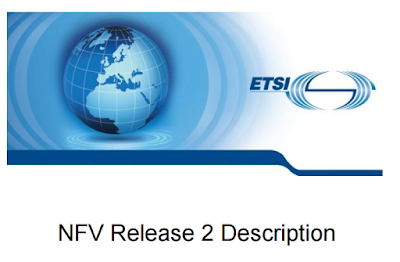The ONOS Project, which develops an SDN control plane for service providers and enterprises, announced its eighth quarterly platform release: Hummingbird.
New Features in ONOS Hummingbird:
Southbound: Hummingbird expands ONOS to be able to configure and control legacy networks with additional support for Arista and Cisco devices. The Hummingbird release also includes Optical feature enhancements and improvements to OSPF and ISIS drivers. Numerous NETCONF enhancements in ONOS create support for many additional devices. In short, all these enhancements allow ONOS to support a variety of legacy devices to help service providers incrementally deploy SDN.
Northbound: Hummingbird rounds ONOS out with new features that improve interoperability and ways for applications to interact with the Northbound protocol through message bus integration (RabbitMQ from ADARA and Kafka from Calix), as well as add more flexibility for intent-based management.
Disruptive SDN: In support of disruptive SDN, ONOS continued to focus on scaling views for very large networks and making it easy for applications to be written to benefit from ONOS’ high availability primitives. Hummingbird brings major new features with additional distributed primitives, support for controller to controller peering and enhancements to the P4 driver support.
Legacy device support: In support of incremental SDN, Huawei brought in significant YANG modeling and management capabilities at both the Northbound and Southbound interfaces, as well as support for the IEEE Abstraction and Control of Traffic Engineered Networks (ACTN).
Commercial support: Hummingbird brings new commercial support for ONOS with Huawei’s announcement of the ONOS-based converged controller, “Agile Controller 3.0.”
Broad Set of Use Cases: Hummingbird’s new service offerings and other enhancements enable valuable use cases in the areas of Cloud and SDN. The vibrant ONOS community has already built use case applications upon ONOS with CORD, packet-optical, and SDN-IP peering, and is building new ones in the areas of dynamic configuration and provisioning, and traffic engineering.
“Hummingbird is the ideal platform to deliver the full SDN value proposition to service providers,” said Bill Snow, vice president of engineering, ON.Lab. “Hummingbird delivers important advancements not only in the core control functions, but also in support of automation and configuration of legacy and OpenFlow-enabled devices to serve the growing set of use cases being tackled by service providers today and into the future.”
https://wiki.onosproject.org/display/ONOS/Release+Model
New Features in ONOS Hummingbird:
Southbound: Hummingbird expands ONOS to be able to configure and control legacy networks with additional support for Arista and Cisco devices. The Hummingbird release also includes Optical feature enhancements and improvements to OSPF and ISIS drivers. Numerous NETCONF enhancements in ONOS create support for many additional devices. In short, all these enhancements allow ONOS to support a variety of legacy devices to help service providers incrementally deploy SDN.
Northbound: Hummingbird rounds ONOS out with new features that improve interoperability and ways for applications to interact with the Northbound protocol through message bus integration (RabbitMQ from ADARA and Kafka from Calix), as well as add more flexibility for intent-based management.
Disruptive SDN: In support of disruptive SDN, ONOS continued to focus on scaling views for very large networks and making it easy for applications to be written to benefit from ONOS’ high availability primitives. Hummingbird brings major new features with additional distributed primitives, support for controller to controller peering and enhancements to the P4 driver support.
Legacy device support: In support of incremental SDN, Huawei brought in significant YANG modeling and management capabilities at both the Northbound and Southbound interfaces, as well as support for the IEEE Abstraction and Control of Traffic Engineered Networks (ACTN).
Commercial support: Hummingbird brings new commercial support for ONOS with Huawei’s announcement of the ONOS-based converged controller, “Agile Controller 3.0.”
Broad Set of Use Cases: Hummingbird’s new service offerings and other enhancements enable valuable use cases in the areas of Cloud and SDN. The vibrant ONOS community has already built use case applications upon ONOS with CORD, packet-optical, and SDN-IP peering, and is building new ones in the areas of dynamic configuration and provisioning, and traffic engineering.
“Hummingbird is the ideal platform to deliver the full SDN value proposition to service providers,” said Bill Snow, vice president of engineering, ON.Lab. “Hummingbird delivers important advancements not only in the core control functions, but also in support of automation and configuration of legacy and OpenFlow-enabled devices to serve the growing set of use cases being tackled by service providers today and into the future.”
https://wiki.onosproject.org/display/ONOS/Release+Model





















